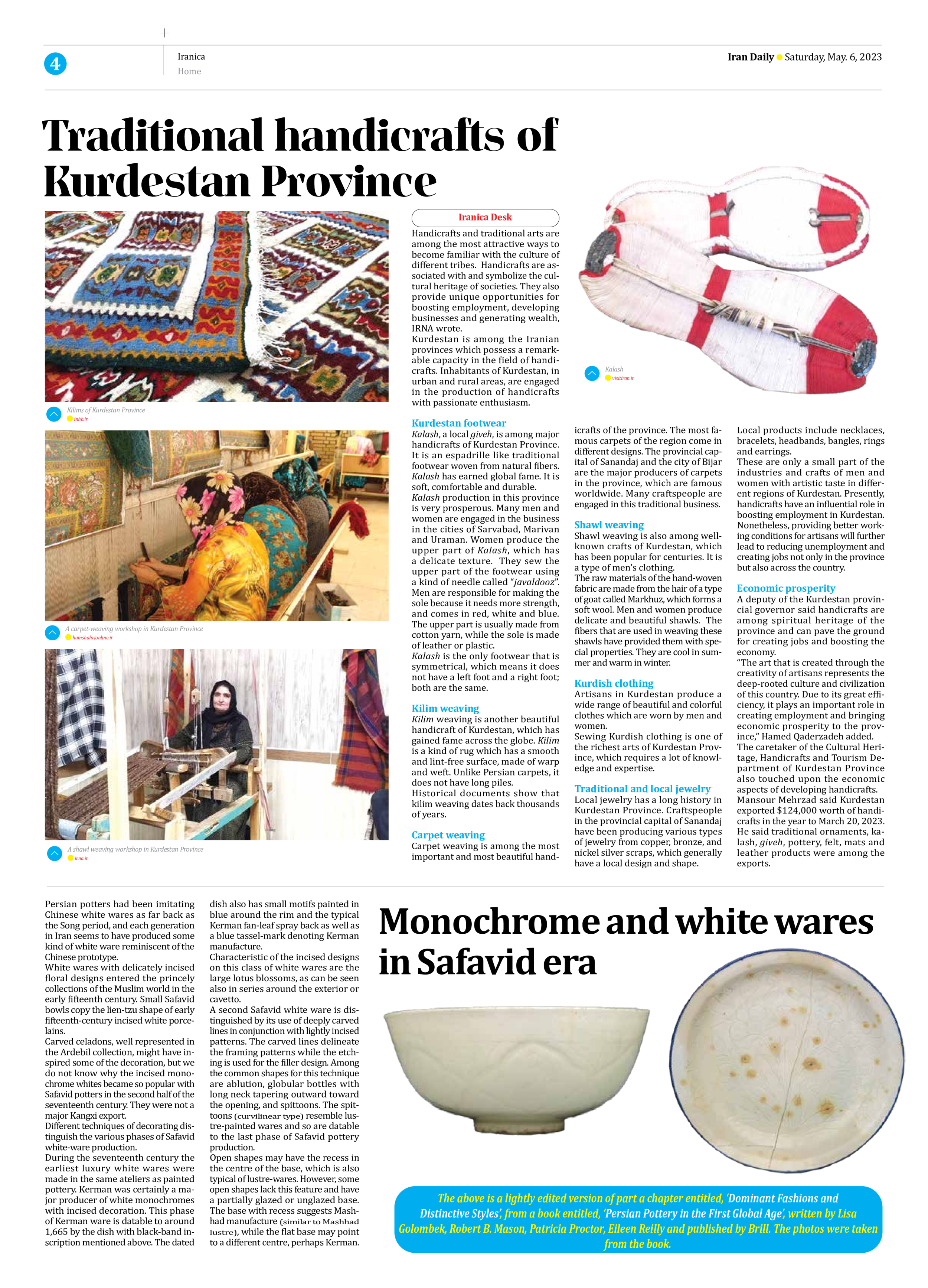
Monochrome and white wares in Safavid era
Persian potters had been imitating Chinese white wares as far back as the Song period, and each generation in Iran seems to have produced some kind of white ware reminiscent of the Chinese prototype.
White wares with delicately incised floral designs entered the princely collections of the Muslim world in the early fifteenth century. Small Safavid bowls copy the lien-tzu shape of early fifteenth-century incised white porcelains.
Carved celadons, well represented in the Ardebil collection, might have inspired some of the decoration, but we do not know why the incised monochrome whites became so popular with Safavid potters in the second half of the seventeenth century. They were not a major Kangxi export.
Different techniques of decorating distinguish the various phases of Safavid white-ware production.
During the seventeenth century the earliest luxury white wares were made in the same ateliers as painted pottery. Kerman was certainly a major producer of white monochromes with incised decoration. This phase of Kerman ware is datable to around 1,665 by the dish with black-band inscription mentioned above. The dated dish also has small motifs painted in blue around the rim and the typical Kerman fan-leaf spray back as well as a blue tassel-mark denoting Kerman manufacture.
Characteristic of the incised designs on this class of white wares are the large lotus blossoms, as can be seen also in series around the exterior or cavetto.
A second Safavid white ware is distinguished by its use of deeply carved lines in conjunction with lightly incised patterns. The carved lines delineate the framing patterns while the etching is used for the filler design. Among the common shapes for this technique are ablution, globular bottles with long neck tapering outward toward the opening, and spittoons. The spittoons (curvilinear type) resemble lustre-painted wares and so are datable to the last phase of Safavid pottery production.
Open shapes may have the recess in the centre of the base, which is also typical of lustre-wares. However, some open shapes lack this feature and have a partially glazed or unglazed base. The base with recess suggests Mashhad manufacture (similar to Mashhad lustre), while the flat base may point to a different centre, perhaps Kerman.
The above is a lightly edited version of part a chapter entitled, ‘Dominant Fashions and Distinctive Styles’, from a book entitled, ‘Persian Pottery in the First Global Age’, written by Lisa Golombek, Robert B. Mason, Patricia Proctor, Eileen Reilly and published by Brill. The photos were taken from the book.







